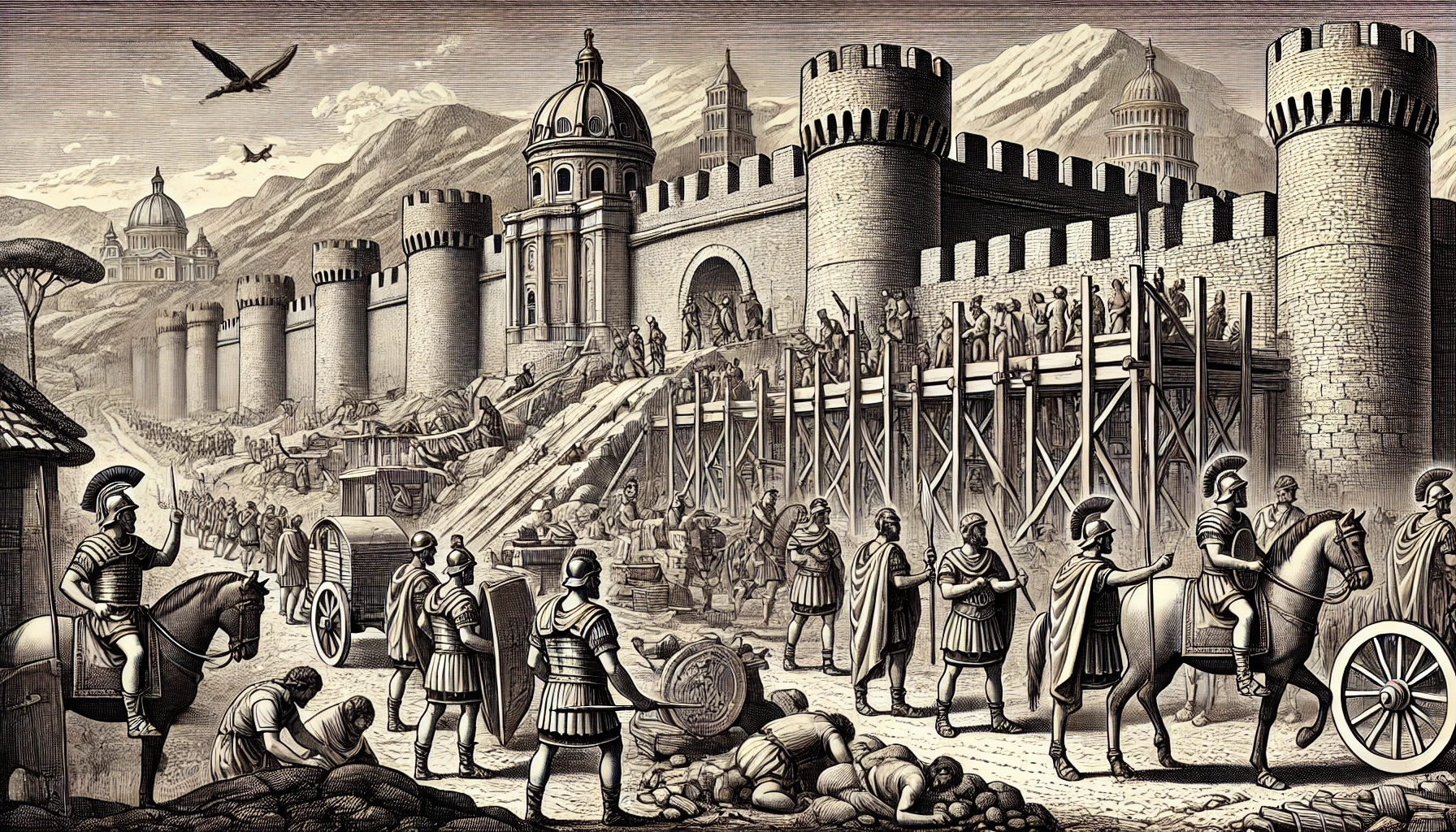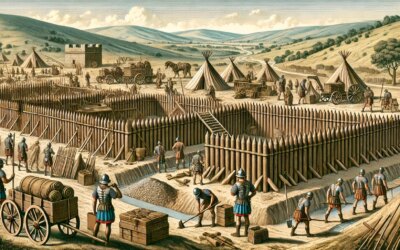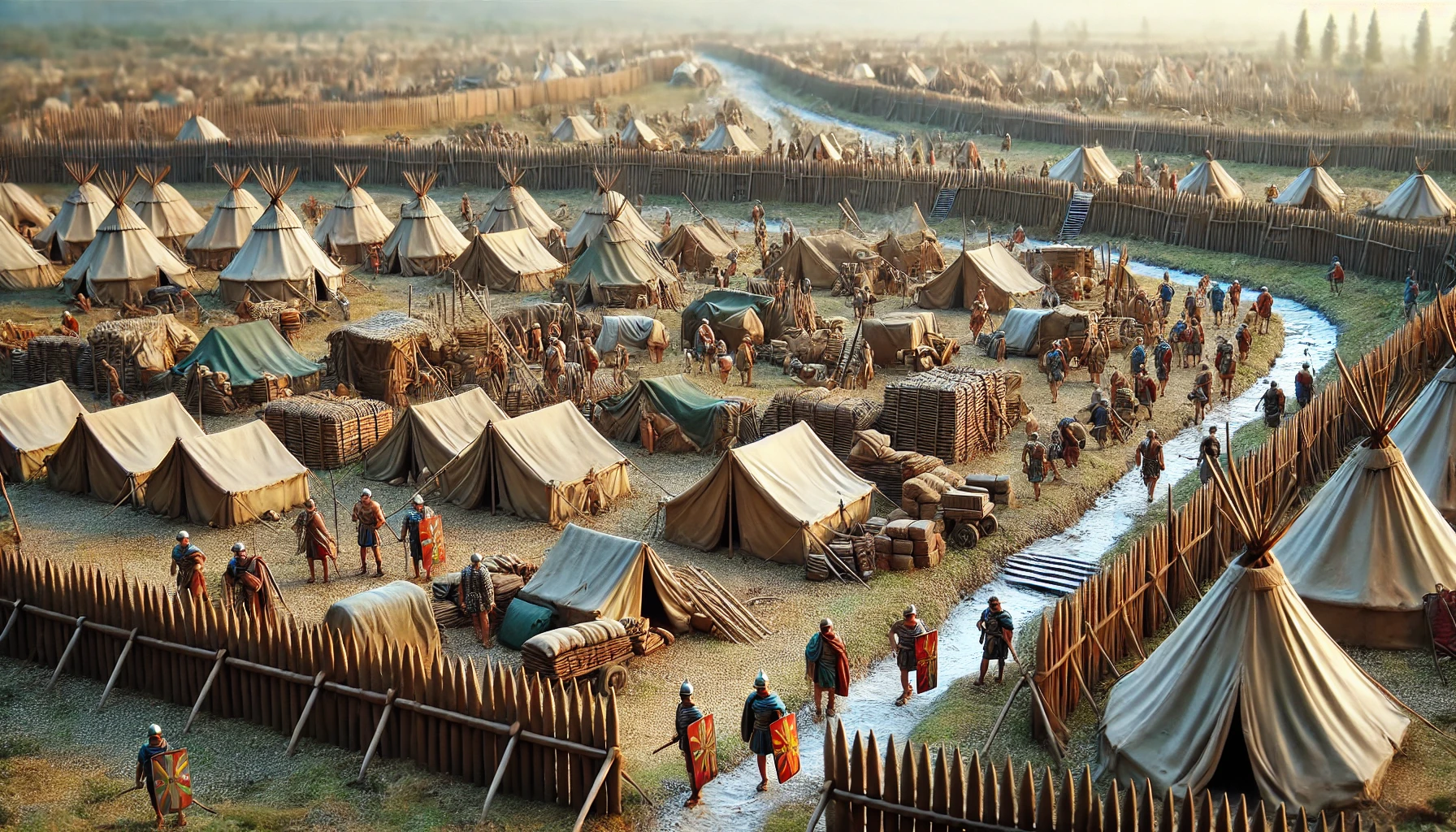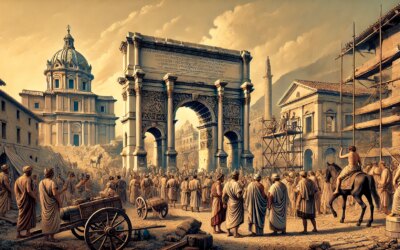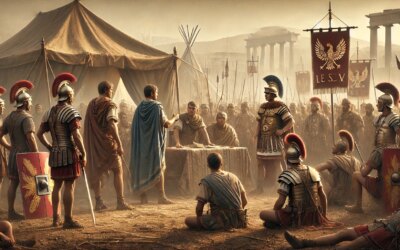Aurelian: The Emperor Who Saved Rome
By the mid-3rd century CE, the Roman Empire was in crisis. Internal rebellions, economic instability, and relentless barbarian invasions threatened its survival. In 270 CE, Aurelian ascended to the throne, determined to restore order. One of his greatest achievements was the construction of the Aurelian Walls, a massive fortification that reshaped Rome’s defenses and safeguarded the city for centuries.
The Need for a New Defense
For most of its history, Rome had relied on its legions to keep enemies at bay, with no need for city walls. However, as the Empire’s frontiers weakened, Germanic and Eastern threats loomed closer. The sack of Roman territories by the Alemanni in 268 CE and the growing instability in Gaul and the East underscored the urgent need for a fortified capital.
Aurelian recognized that Rome was no longer untouchable. His solution? A formidable wall stretching nearly 19 kilometers (12 miles) around the city, enclosing an area far larger than any previous fortifications.
The Construction of the Aurelian Walls
The walls, built between 271 and 275 CE, were a marvel of Roman engineering. Standing approximately 8 meters (26 feet) high and 3.5 meters (11 feet) thick, they incorporated existing structures such as aqueducts and buildings, expediting construction. Over 380 towers were strategically placed for archers and ballistae, ensuring maximum defensive capability.
Unlike previous Roman fortifications, the Aurelian Walls were built with the expectation of prolonged sieges. The city gates, including the famed Porta Appia and Porta Ostiensis, were reinforced with watchtowers and multiple entry points to control access. This design would prove instrumental in protecting Rome from future invasions.
Aurelian’s Broader Military Reforms
The construction of the walls was just one aspect of Aurelian’s military strategy. He launched aggressive campaigns against the Palmyrene Empire in the East and the Gallic Empire in the West, successfully reuniting a fractured Rome. His victories earned him the title “Restitutor Orbis” (Restorer of the World), solidifying his legacy as a crucial figure in Rome’s survival.
The Walls’ Role in Rome’s Survival
After Aurelian’s assassination in 275 CE, the walls continued to play a vital role. They defended Rome against numerous invasions, including the Visigothic sack of 410 CE and the Vandal raids of 455 CE. Even as the Western Roman Empire collapsed, the walls remained, serving as Rome’s primary line of defense well into the Middle Ages.
A Lasting Legacy
The Aurelian Walls stand today as one of the most enduring symbols of Rome’s resilience. Though Rome’s political power faded, the walls ensured the city’s physical survival through centuries of turmoil. Aurelian’s vision was not just a temporary solution—it was a defining moment in Roman military history, one that protected the Eternal City for generations.

